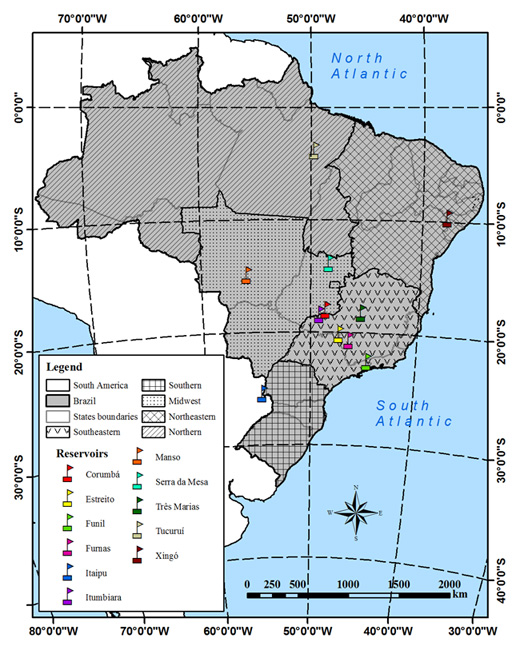Análisis comparativo de modelos e instrumentos de gestión integrada del recurso hídrico en Suramérica: los casos de Brasil y Colombia (doi:10.4136/ambi-agua.971)
Palabras clave:
Gestión integrada del agua, comités de cuencas hidrográficas, Brasil y Colombia, herramientas de GIRH, participación comunitaria en gestión de cuencas
Resumen
Brasil y Colombia son países ricos en términos de dotación de agua, ubicándose como líderes en la oferta mundial de recurso hídrico. A pesar de esto, ambos países tienen problemas de escasez relativa de este líquido vital en zonas donde justamente existe mayor cantidad de población y un gran nivel de actividad económica. En ambos países a su vez, el establecimiento de políticas y normas ambientales legales tiene larga tradición. Sin embargo, aunque existen disposiciones e instrumentos orientados a la gestión del agua a nivel de las cuencas, estos no necesariamente siguen los desarrollos conceptuales de la gestión integrada del recurso hídrico (GIRH). Como resultado, los dos países han implementado parcialmente elementos de la GIRH pero con características diferentes tanto en su estructura como en los instrumentos implementados. En Colombia es el estado a través de las Corporaciones Ambientales Regionales, las que implementan las principales herramientas de GIRH (concesiones, tasa por uso del agua, tasa por contaminación, planes de cuenca, etc.), sin existir una participación formal de la sociedad civil en la gestión. En Brasil en cambio, la estructura de gestión y las herramientas de GIRH son descentralizadas y participativas, pues son los Comités de Cuenca, entidades donde participa el gobierno estatal, los municipios y los usuarios, los que tienen el mayor peso en la gestión del agua. Sin embargo, este modelo aún no está implementado en todas las cuencas hidrográficas. Así, el objetivo de este artículo es comparar los aspectos institucionales y normativos de los modelos de gestión del agua en Brasil y Colombia alrededor de la aplicación del concepto de gestión integrada del recurso hídrico. Para esto último, se trabajó con un estudio de caso para cada país referente a las cuencas hidrográficas río Nima (Colombia) y Tietê-Jacaré (Brasil).
Publicado
25/04/2013
Número
Sección
Articulos
Authors maintain the copyrights for their work. However, they grant rights of first publication to Ambiente e Agua - An Interdisciplinary Journal of Applied Science. In compensation, the journal can transfer the copyrights, allowing non-commercial use of the article including the right of sending the article to other data bases or publication media. La revista utiliza la licencia CC BY 4.0"






